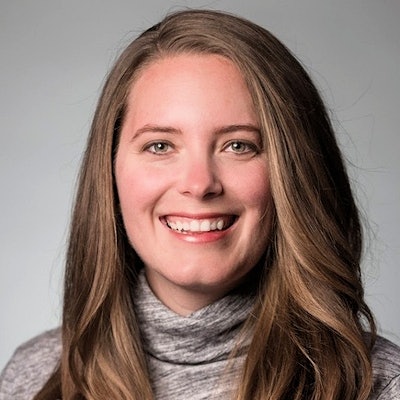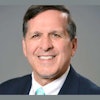
There's an old saying that if you take care of your employees, they will take care of your business. In dentistry, we think that concept runs a little deeper.
If you take care of your patients, they will take care of your practice.
 Katie Poulsen, RDH.
Katie Poulsen, RDH.You already provide the best possible treatment to those who need it. But there's an easy way to take that care to the next level, and it's not what most marketing would have you believe.
Instead of fixating on acquiring new patients, make protecting your existing patient base a priority. Why? Because focusing your energy on the patients you already have makes sense -- financially and dentally.
It doesn't matter how many new patients come through your front door if they proceed to walk out the back. The average practice sees a yearly attrition rate of 12% to 15%, which means if you have 1,500 patients per year, you're likely losing 202 of them.
But focusing on your current patients isn't just about avoiding attrition. According to the ADA, the average practice has up to $1 million of unscheduled opportunities.
$1,000,000 of unscheduled opportunity
That's a lot of zeroes in untapped net production, but let's look at the deeper, dental meaning. If the average annual treatment plan is valued at $500, this unscheduled opportunity averages out to 2,000 people who have untreated disease and problems. That makes completing diagnosed treatment is vital -- both for your practice and for the health of your patients.
Smart scheduling requires that you see both who is scheduled and who is not. It also requires strong communication systems that make it easy for patients to schedule or reschedule appointments. Here are five simple steps to help you schedule the way top-performing practices do.
1. Evaluate your current availability
Start by evaluating how much dentistry you're capable of providing on any given day. How many visits do you have available? Productive, solo-practicing dentists see 10 restorative patients a day -- add a hygienist, and it's about 18 visits per day.
What is the right number for your practice? To calculate the number of visits you'll need to be productive, ask these questions:
- How many providers do we have?
- How many hours does each provider work?
- What is each provider's gross production goal?
These questions will help you answer how many visits you need to schedule in a given day, week, or month.
A robust, cloud-based calendar uses your production goals to find cracks in your schedule and helps you fill them with unscheduled treatment. That means you optimize your schedule and provide more dentistry to those who need it most.
2. Prioritize the right patients
What do we mean by the right patients? Two things:
- Prioritize the patients who you know need care (unscheduled treatment).
- Prioritize the patients who you know will be beneficial for your practice.
The ideal patient will be a combination of both -- someone who has unscheduled treatment, remaining insurance dollars, a history of on-time payments, a high treatment acceptance rate, and no history of cancellations or no-shows. When filling your schedule, reach out to patients with those qualities first.
Here's what that process might look like in a bit more depth: First, consider whose schedule you're trying to fill. Specialists and hygienists, for example, will have different criteria than general practitioners. Once you've done that, match providers, their time, and their skillset with patients based on the following:
- Availability: Consider things like school schedules.
- Procedure/treatment type: Think about what type of procedure fits the provider and how much time he or she will need to complete it.
- Insurance/payment: Evaluate the likelihood that the patient will be able to pay for the treatment.
That is a lot to consider. For each step, utilize reporting in your practice management software to help you determine potential candidates.
3. Fill your schedule
The patient has left the office without scheduling an appointment, and you don't have online scheduling software -- what now? The front desk staff must start calling the patient to get him or her to schedule again. If you ask them, they'll likely say this is the hardest part of their job. They'll usually call about three times before giving up.
Again, we can't recommend online scheduling enough -- something with write-back capability that allows patients to fully book their own appointments. It will allow you to schedule patients on weekends and holidays and even in the dead of night.
More than 70% of patients indicate they're willing to switch dentists if they can schedule themselves online. Giving patients that real-time online scheduling capability frees the front desk staff to do other important tasks. You can even send reminders en masse, turning hours of phone work into one simple email.
But if you still intend to schedule patients manually, here are a few recommendations:
- Figure out the best time to contact patients. Think about their work and school schedules.
- Evaluate the best way to contact them by predicting their communication preferences. Text messages are great for younger patients but may not be ideal for someone age 70 or older.
- Build a follow-up schedule and stick to it. The average practice that is successful in outbound communication follows a 2-2-2 rule:
- Two days later
- Two weeks later
- Two months later
- Log each call and keep a report of how many times and forms of communication you've used to contact patients.
4. Prioritize same-day treatment
One of the things we learned in 2020 is that the top-performing practices tend to work smarter and harder. While the COVID-19 pandemic drove practices to optimize chair time to minimize the risk exposure, the top 10% of practices responded by prioritizing same-day treatment.
Those top-performing practices completed almost 50% of the same-day dentistry they presented to their patients. This allowed them to minimize attrition, which set them apart from the rest of the industry.
How did they accomplish that feat, and how can you achieve the same? Before each patient's appointment, most likely the day before, audit each patient's treatment plan.
By evaluating treatment plans, you can do the following:
- Eliminate duplicates: Procedure codes often get put on the treatment plan and end up living there forever. Be sure to remove or reject duplicate codes or treatment the patient is not going to complete. This will create accurate data of unscheduled treatment.
- Look for same-day opportunity: Look at the unscheduled treatment of each patient. Evaluate time on the schedule and see if more treatment could be done while the patient is in the chair.
Filling the holes in the schedule with existing unscheduled treatment is a win-win. It just takes some forethought and a willingness to prepare.
5. Keep your future schedule full
Most practices think their hygiene reappointment rate (future appointments made during a preventative appointment) is at 80% or better. Unfortunately, they're wrong.
In fact, data from more than 8,000 practices show that most practices' hygiene reappointment rate is less than 50%. Some rates are as low as 20%.
Those low numbers aren't sustainable. When you don't reappoint your patients, your practice will struggle with long-term retention and production. A difference of just 10% in reappointment rate can equate to over half a million dollars of profitability over 10 years.
So where does your reappointment rate stand? To evaluate your practice, take your active patient list and divide it by the number of patients you have scheduled for an appointment. The industry standard of reappointment rate compared to active patients is 70%.
Are you at 70%? If not, celebrate! That's right -- this is good news. It means you have room for growth and future success.
Consider these tips to get all patients reappointed before they leave the office:
- Hygienist reappointment: The most successful practices have their hygienists or assistants reappoint while patients are in the chair.
- Restorative reappointment: Treatment coordinators and the front desk should make it a priority to get every appointment for the next step of treatment, even if that is one cleaning in a year.
- Audit yesterday's schedule and call every patient who didn't get reappointed.
Every practice wants to experience growth. How you define that will be different, of course, but regardless of what growth looks like for you, how you manage your schedule is key to any success you might hope for.
Even if you don't implement all of these suggestions, starting with just one is a great first step. The key (isn't this always true?) is to start.
Katie Poulsen, RDH, is a subject matter expert at Dental Intelligence. She has a bachelor's degree in dental hygiene and a master's degree in communication from Weber State University in Ogden, UT. Her more than 20 years in dentistry also include experience in workplace communication and small business social media marketing.
The comments and observations expressed herein do not necessarily reflect the opinions of DrBicuspid.com, nor should they be construed as an endorsement or admonishment of any particular idea, vendor, or organization.



















